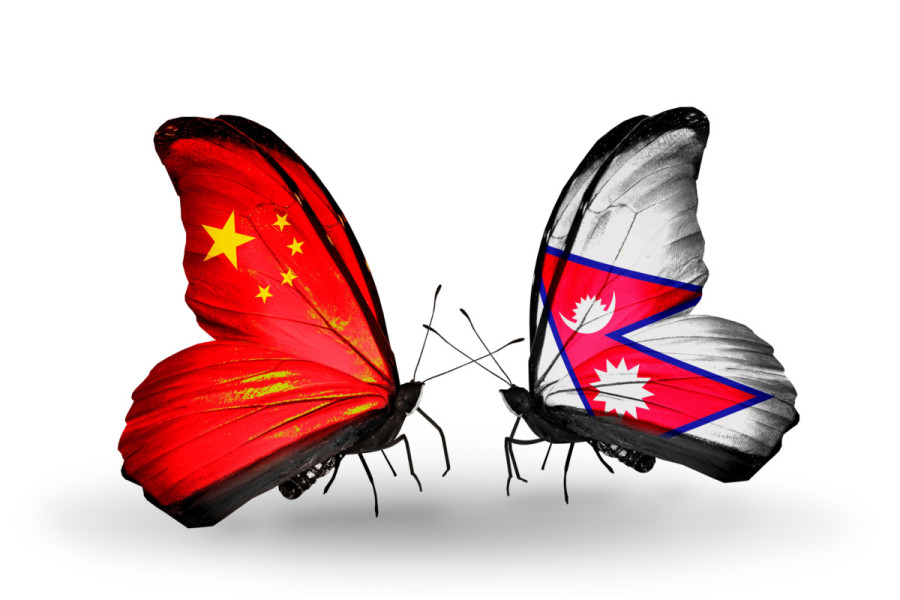Columns
Reflections on Nepal-China relations
China’s economic investment in Nepal has increased, but its contribution to creating jobs is meagre.
Chandra D Bhatta
Prime Minister Pushpa Kamal Dahal is embarking on an official visit to China on September 22. Even though the visit is long due, three factors make it vital: First, it is taking place right after China issued its so-called “Standard Map”, excluding Nepal’s new official map. Second, while projects under the Belt and Road Initiative (BRI) are stuck, the United States-funded Millennium Challenge Corporation—often portrayed as the nemesis of BRI—is all set for implementation. Third, China is revisiting BRI, which may provide options and opportunities not only to understand the initiative better but also to renegotiate where necessary. Moreover, the visit is taking place right after Prachanda’s relatively productive visit to India.
Paradoxical as it may seem, Beijing looks uncomfortable with these developments. Many consider the recent statement by Chinese Ambassador Chen Song in Kathmandu to be a product of that frustration. However, some of his statements are undiplomatic and uncalled for to the point where he suggests Nepal align its economy with the Chinese model and frequent India bashing. On the other hand, his remarks about Nepal’s economic conditions are the bitter truth. It appears that China fears losing the plot in Nepal, so Nepal’s increased and engaged relations with other countries are not to China’s liking anymore, which was never the case in the past.
Nepal-China relations are historical, but the framework of the extant relations is anchored through three factors wherein Nepal recognises Tibet as an integral part of China, embraces the one-China policy concerning Taiwan, and does not and should not allow its territory to be used against China. The fundamentals of China’s policy are unclear. China, without a doubt, is Nepal’s long-standing trusted neighbour and development partner, and its proposal to build a trans-Himalayan railway network in Nepal is commendable. However, none of them spell out China’s foreign policy towards Nepal.
China’s latest endeavours, BRI and its associated paraphernalia, are primarily viewed from the geopolitical and geo-economic angle. In tandem with BRI, China has launched several other initiatives, including the Global Development Initiative, the Global Security Initiative and the Global Cultural Initiative. From the Chinese point of view, these are instruments to make China great again, and China claims that they are gifts to the developing world, but they are unconvincing.
Furthermore, some projects under BRI require huge financial resources and countries like Nepal cannot generate funding independently. For them, a Chinese loan would have been an option, but the new merchant’s interest rates are simply not affordable. Some ventures like GSI appear to have defence/military components, which doesn’t look plausible for Nepal, having declared a non-aligned foreign policy doctrine. To our dismay, if China does not provide grants (emphasis added), Nepal has no choice but to drop some of them for good or bad reasons. BRI projects also require long-term commitments. Already, Hambantota syndrome has bugged many countries, and “infrastructure development” is regarded as a new weapon to expand influence in global politics.
The changing dynamics
Nepal-China relations have also witnessed many ups and downs. For instance, both countries fought wars over Tibet in the past, forcing Nepal to pay tribute to the then-Chinese Emperor and lose its territory in the North by signing the Betrawati treaty. Relations have improved since then, but interactions at the people’s level have remained low. The relation between Tibet (then Bhot) and Kathmandu (then Nepal) was mercantile, and to some extent, cultural. “Materialistic ideology” became more pertinent during Mao’s China; interactions and engagements have increased with Xi Jinping’s rise, but fear and suspicion remain on both sides.
Elite-centric approach
While the re-emergence of China as a global power is a joyful moment for all, it may not always benefit others when the overarching objective is to become rich, powerful and glorious. Instead, they continue to build walls or create a belt to advance their interests and gain momentum. Smaller countries of the region, for their part, are not even willing to accept what China calls the “gifts” at a time when the country is consolidating its pivot. In that regard, “elite centric clientele” style diplomacy could strengthen the “pro-china” brigade, but this will certainly prevent understanding of the reality. It, however, could be useful in reinforcing the narrative that “China does no wrong”, which is neither true nor serves Chinese or Nepali interests.
Similarly, China’s proximity to certain political parties for its own comfort had already failed disastrously, when the country played a part in bringing communist parties together to form the Nepal Communist Party (NCP). Failure, then, was inevitable because Nepali society (not the state) has become a “multistake holding” that China did not consider. The consequences were such that, to a large extent, all that spoiled China’s image and perception in Nepal. Put together, regime-centric, ideological and clientelist approach all appear to have been failing for more than one reason.
Redefining the relations
Nepal always remained honest and conducted relations with China, as indicated earlier. Beginning from BP Koirala’s time till King Gyanendra’s reign, they all maintained the same policy irrespective of their challenges at home. In 1960, Koirala strongly pleaded to reintroduce China at the UN General Assembly. Nepal’s policy towards China remains intact. Even the current political leaders, who are known for mercurial behaviour about foreign policy, are honest with China. But does China reciprocate in the same manner and method? The answer is both “yes and no”. Yes, because China’s role in developing Nepal’s infrastructure is phenomenal. No, because China also creates obstacles and often undermines important issues in Nepal. For instance, Nepal attempted to diversify its dependency by signing a trade and transit agreement with China, but sadly, soon after, it closed borders under various pretexts.
Where friend shoring has become a major initiative and the fundamentals of society and the political economy are going through a profound metamorphosis, relying on a single neighbour is neither plausible nor practical, at least for Nepal. Nevertheless, an important caveat is that while the Nepali “state” may not have grown stronger, the Nepali “nation” definitely has grown significantly bigger. If not now, this reality will have to be reflected in its foreign policy at some point. Likewise, having the best relations with China and India is crucial for a territorial state—though they cannot be equal, which China used to understand. But for society, the constituency has shifted and expanded in more than one way, necessitating different balancing approaches in Nepal.
China’s economic investment in Nepal has increased, but its contribution to creating jobs for the locals is just a meagre. China will have to relook into it; otherwise extant model is similar to what Dambisa Moyo calls winner-take-all. Foregoing discussion informs that cultivating healthy and sustainable relations requires a broader understanding of the issues from both sides. For Nepal, we should not seek relations with China merely for political benefit; China should not reduce Nepal merely to a geopolitical pawn, as many others are doing. It would be wise for both countries to look beyond what can allow us to come out of the extant geopolitical whirlwind and strengthen confidence-building measures.




 16.12°C Kathmandu
16.12°C Kathmandu















